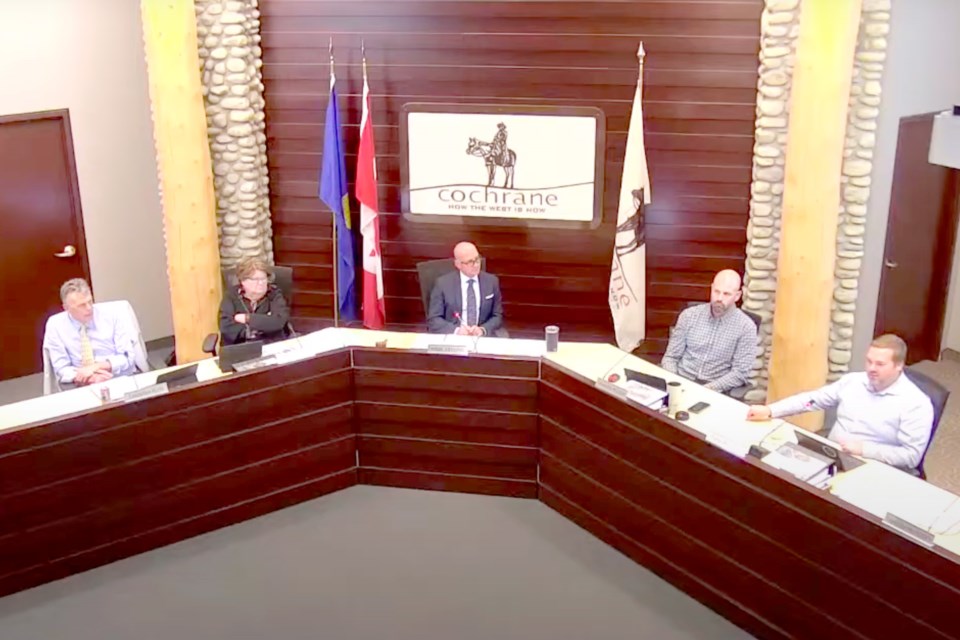An Off-Site Levy (OSL) is a municipal tool used to help fund new infrastructure by charging developers. Essentially, it’s a system where growth is supposed to pay for growth.
Cochrane’s current average off-site levy is $320,000 per hectare, set in 2021 through the adoption of Bylaw 09/2021.
“It includes cost recovery for sanitary collection and disposal, water supply, treatment and distribution, transportation projects, and our protective services facility,” said Stacey Loe, executive director of corporate services.
Loe noted several recent projects funded through the OSL program, including:
- Highway 1A intersection improvements
- Centre Avenue widening
- James Walker Trail (first stage)
- Highway 22 through the Riverview siphon
- River Heights Reservoir, Phase 1A
While the existing levies helped support those projects, significant cost escalations have prompted a need for an update.
“We’ve completed a significant amount of work through our studies and analysis to ensure we’re updating those costs and project scopes appropriately,” Loe said.
At its July 14 regular meeting, Town administration presented Bylaw 15/2025, which proposes a major update to Cochrane’s OSL bylaw.
The proposed bylaw aligns the OSL framework with Cochrane’s servicing plans, development patterns, and long-term financial strategies. Notable changes include:
- Two new highway intersections: Rolling Trails and Highway 1A/Heritage Hills
- Addition of community amenities:
- Library
- Twin-ice arena recreation facility
- North and south fire hall facilities
- Updated costs for previously included projects such as James Walker Trail, Jack Tennant Memorial Bridge widening and River Heights Reservoir
- Revised growth projections, assuming about 28.2 hectares of development annually through 2045
- New three-stage payment schedule, replacing the current two-payment model:
- 20% at subdivision endorsement or development permit (DP) issuance
- 40% one year later, or at Construction Completion Certificate (CCC), whichever comes first
- 40% one year after that, or at Final Acceptance Certificate (FAC), whichever comes first
- Updated financial assumptions, including inflation, borrowing rates, grant funding, interest, and levy fund balances
- Refined development area boundaries within 17 zones to more accurately allocate costs
Loe emphasized that administration had consulted with stakeholders throughout the process, including the Cochrane Developer Liaison Group and a smaller working group of industry representatives.
The updated average levy under the proposed bylaw is $440,857 per hectare, a 38 per cent increase over the current rate.
During the meeting, Coun. Morgan Nagel questioned the timing.
“Happy to see this here today,” he said. “My only concern is I wish we would have seen it here 12 or 18 months ago. We’ve left a lot of money on the table by leaving it this far.”
Administration responded that although the update is overdue, levies for past projects are still collected, though spread across less developable land.
“This has been a priority for administration for quite some time,” said CAO Mike Derricott. “We would have been very happy to bring this forward a year ago. That said, I want to assure council and the community that this does not equate to money being left on the table. I understand how it may feel that way, but that’s not the case.”
A larger discussion emerged during the meeting: whether Cochrane should continue approving new developments under the current financial model.
Coun. Patrick Wilson referenced a previous Urban3 presentation to council that highlighted a key concern.
“I think what came out of that presentation was that most of the communities we’ve developed, and continue to approve, aren’t financially solvent in the long term,” he said. “Why would we currently be approving any more development when each new resident makes a current resident a little worse off?”
Wilson supports more frequent OSL updates as a step forward but said the system remains inadequate.
“I just don’t think the province currently allows us to collect off-site levies that truly reflect the costs imposed by new residents,” he said.
Loe explained that while provincial regulations do set boundaries, each project in the levy program is carefully assessed.
“Every project within the off-site levy is evaluated based on its benefiting area,” she said. “We determine whether it benefits only new growth or has value for existing residents as well and assign cost shares accordingly.”
Derricott added that the problem goes beyond new growth.
“If you evaluated even the longest-standing communities in Cochrane, we are not charging them appropriately for their cost,” he said. “It’s not just a growth problem, it’s a broad systemic issue. But we are improving and doing a lot of work on it.”
Council unanimously approved first reading of Bylaw 15/2025. A non-statutory public hearing has been scheduled for Sept. 8, 2025, at 5:30 p.m. for further community input.




